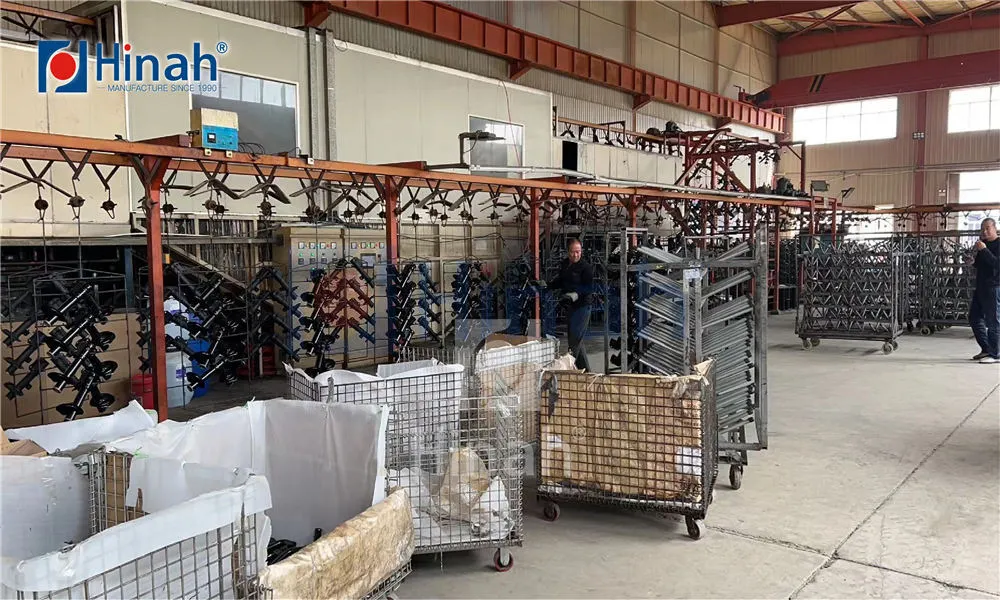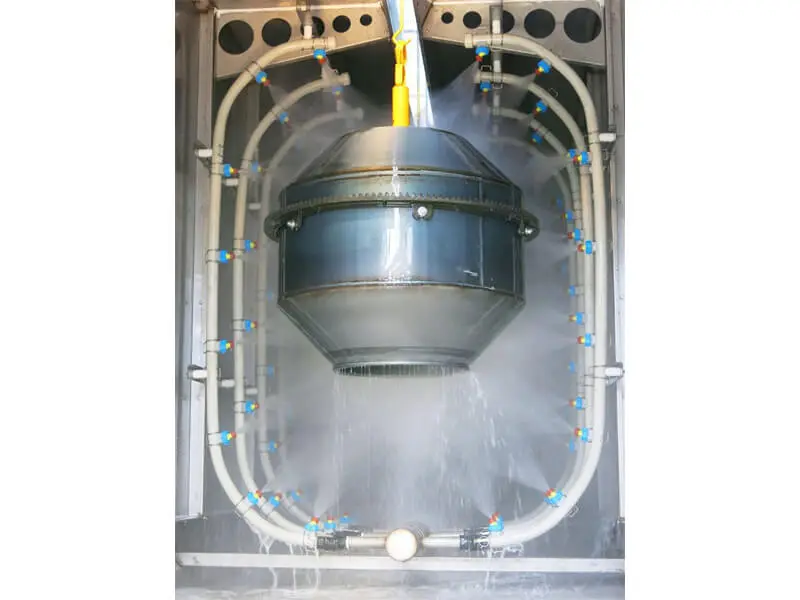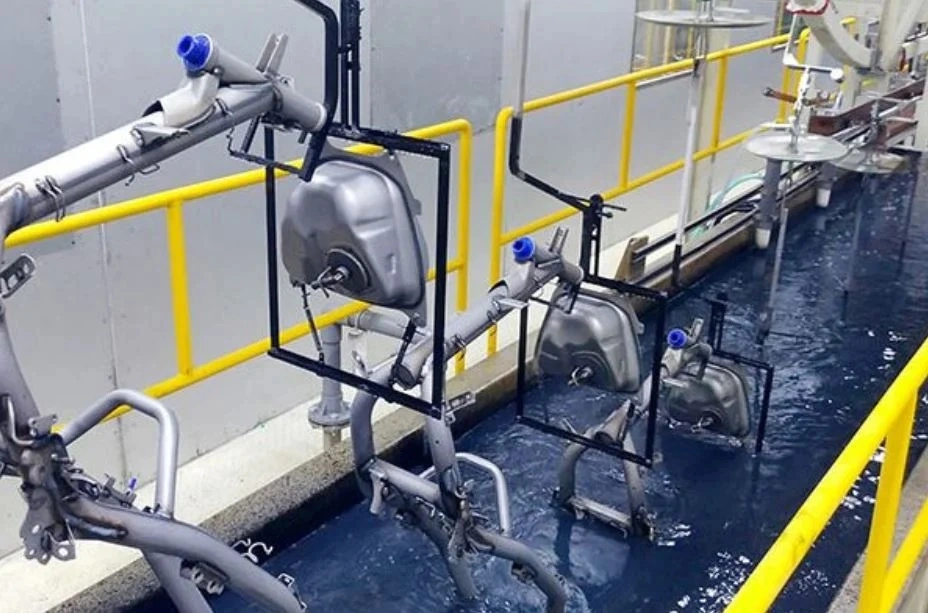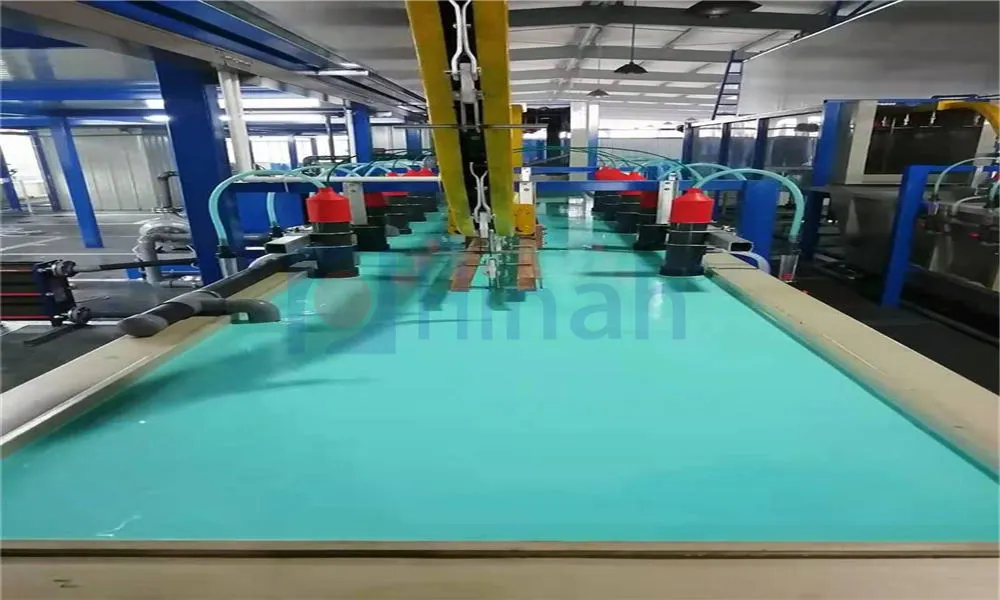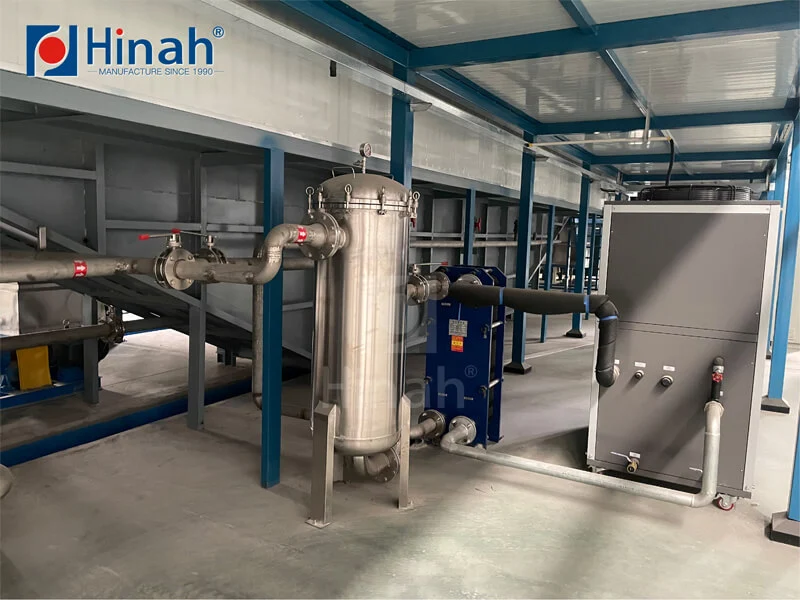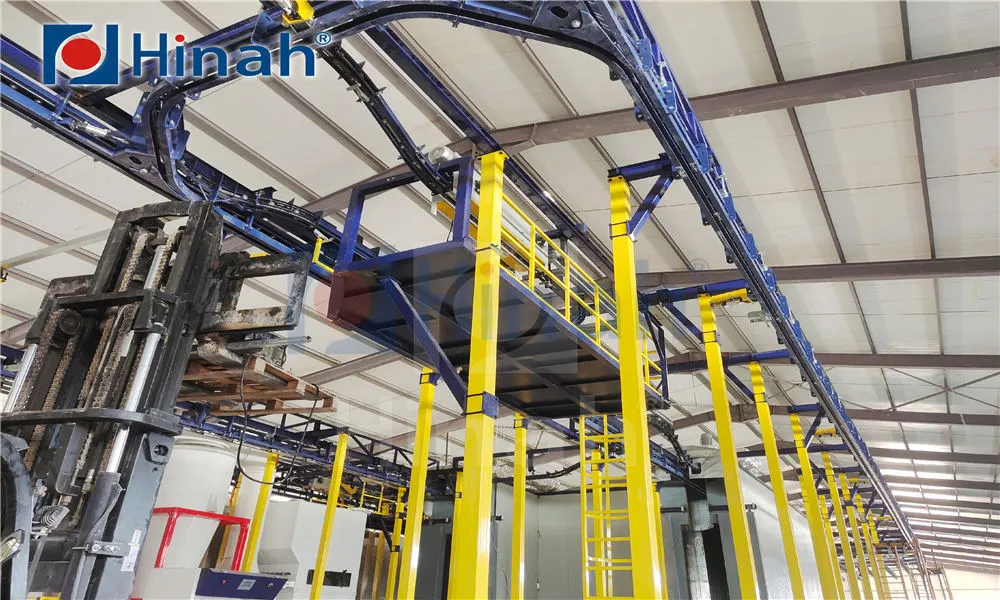Powder coating has long been a staple in industrial finishing due to its durability, eco-friendliness, and efficiency. However, the integration of robotics has taken this process to new heights. Powder coating robots are automated systems designed to apply powder coatings with precision, consistency, and speed, revolutionizing sectors from automotive to aerospace. These robots leverage advanced technologies like artificial intelligence and IoT to optimize coating processes, reducing waste and human error. As industries strive for higher quality and sustainability, powder coating robots are becoming indispensable. In this article, we explore six key advances that highlight the transformative impact of powder coating robots, delving into their workings, benefits, applications, and future potential. Whether you're new to the field or seeking to upgrade your operations, understanding these innovations is crucial for staying competitive in the global powder coating landscape.

What Are Powder Coating Robots and How Did They Evolve?
Powder coating robots are specialized robotic systems used to automate the application of powder coatings onto various surfaces. Unlike manual methods, these robots consist of articulated arms equipped with spray guns, controlled by programmable logic controllers (PLCs) or computer systems. They are designed to handle complex geometries and large volumes with unmatched accuracy. The evolution of powder coating robots dates back to the late 20th century, when industries began adopting automation to improve consistency. Early versions were simple mechanical arms, but today's powder coating robots incorporate sensors, vision systems, and real-time data analytics. This progression has made them smarter and more adaptive, capable of adjusting parameters like spray distance and flow rate on the fly. The rise of powder coating robots aligns with broader trends in Industry 4.0, where connectivity and data-driven decisions enhance manufacturing efficiency. By replacing labor-intensive tasks, powder coating robots not only boost productivity but also ensure a safer work environment by minimizing human exposure to chemicals and repetitive motions. As a result, they are now a cornerstone in modern powder coating facilities, driving innovation across the board.
How Do Powder Coating Robots Operate with Such Precision?
The operation of powder coating robots revolves around a combination of mechanical engineering and software intelligence. Typically, a powder coating robot follows a pre-programmed path based on CAD models of the part to be coated. It starts with a calibration phase, where vision systems or lasers scan the object to detect its exact dimensions and orientation. This data is fed into the control system, which adjusts the robot's movements to ensure even coverage. The spraying process involves electrostatic charges: the robot's gun applies a positive charge to the powder particles, which are then attracted to the grounded object, creating a uniform layer. Key components like reciprocators or multi-axis arms allow the powder coating robot to reach intricate areas, such as corners or undersides, without overspray. Advanced models feature closed-loop control systems that monitor parameters like thickness and humidity, making real-time adjustments to maintain quality. For instance, if a sensor detects an uneven coat, the powder coating robot can increase the spray time or change the angle instantly. This precision reduces material waste by up to 30% compared to manual methods, making powder coating robots a cost-effective solution. Moreover, integration with IoT enables remote monitoring and predictive maintenance, ensuring minimal downtime. In summary, the sophisticated operation of powder coating robots hinges on seamless hardware-software synergy, delivering results that are both efficient and reproducible.
What Are the Primary Benefits of Deploying Powder Coating Robots?
Deploying powder coating robots offers a multitude of benefits that cater to the demands of modern manufacturing. First and foremost is consistency: powder coating robots apply coatings with unwavering accuracy, eliminating human variability and defects like orange peel or thin spots. This leads to higher product quality and reduced rework, saving time and resources. Secondly, efficiency is significantly enhanced; a powder coating robot can operate 24/7 without fatigue, increasing throughput by up to 50% in many cases. This is particularly valuable in high-volume industries where speed is critical. Third, powder coating robots improve safety by handling hazardous tasks, such as working in confined spaces or with toxic materials, thus lowering the risk of workplace injuries. Additionally, these systems are environmentally friendly; by optimizing material usage, powder coating robots minimize overspray and waste, aligning with sustainable practices. Cost savings are another major advantage—though the initial investment in powder coating robots can be substantial, the long-term reduction in labor, material, and energy costs often results in a quick return on investment. For example, a powder coating robot can recycle excess powder, cutting down on raw material expenses. Lastly, flexibility is a key benefit; modern powder coating robots can be reprogrammed for different products or coating types, making them ideal for custom or batch production. Overall, the benefits of powder coating robots make them a smart choice for businesses aiming to enhance competitiveness and sustainability.
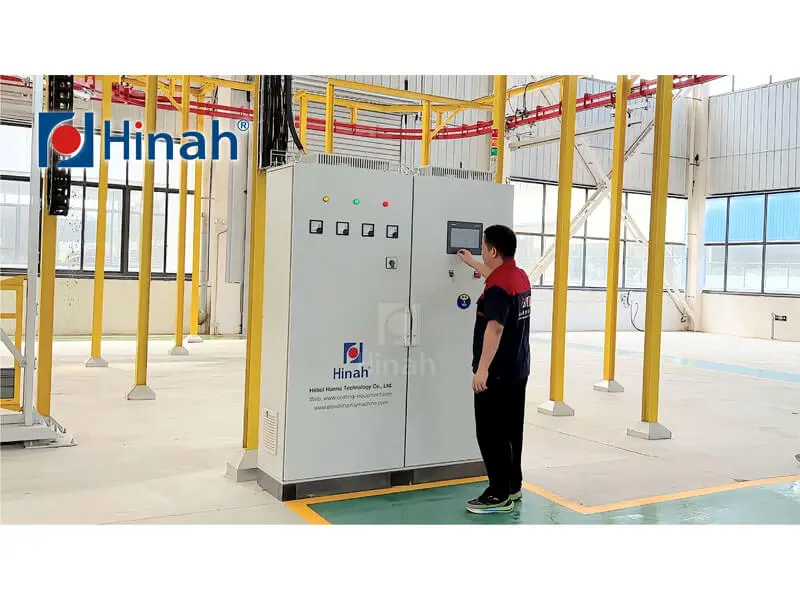
Where Are Powder Coating Robots Making the Biggest Impact?
Powder coating robots are making significant strides across various industries, thanks to their versatility and efficiency. In the automotive sector, powder coating robots are used for coating car frames, wheels, and components, ensuring a durable finish that withstands corrosion and wear. The ability to handle complex shapes makes them perfect for automotive assembly lines, where precision is paramount. Similarly, in aerospace, powder coating robots apply protective coatings to aircraft parts, meeting strict regulatory standards for safety and performance. The furniture industry also benefits from powder coating robots, which coat metal frames and outdoor fixtures with consistent, aesthetic finishes. Another growing application is in the construction sector, where powder coating robots treat structural steel, bridges, and facades, enhancing longevity against environmental factors. Additionally, consumer electronics rely on powder coating robots for coating housings and components, providing a sleek, scratch-resistant surface. The adaptability of powder coating robots allows them to cater to niche markets as well, such as agricultural machinery or medical devices. In each of these fields, powder coating robots contribute to faster production cycles and higher quality outcomes. As global demand for durable finishes rises, the impact of powder coating robots continues to expand, driven by their ability to meet diverse industrial needs. This widespread adoption underscores the transformative role of powder coating robots in shaping modern manufacturing landscapes.
What Technological Innovations Are Shaping the Future of Powder Coating Robots?
The future of powder coating robots is being shaped by cutting-edge technological innovations that promise even greater efficiency and intelligence. One major trend is the integration of artificial intelligence (AI) and machine learning; these enable powder coating robots to learn from past jobs, optimize spray patterns, and predict maintenance needs, reducing downtime. For instance, AI-powered powder coating robots can analyze data from sensors to adjust for environmental changes, like temperature fluctuations, in real time. Another innovation is the use of collaborative robots (cobots), which work alongside humans safely, offering flexibility in smaller setups. These cobots are designed to be user-friendly, allowing operators to program powder coating robots with minimal training. Additionally, advancements in vision systems are enhancing the capabilities of powder coating robots; 3D scanning and augmented reality help in precise targeting, especially for custom or irregularly shaped objects. The Internet of Things (IoT) is also playing a pivotal role, connecting powder coating robots to cloud platforms for remote monitoring and data analytics. This connectivity enables predictive maintenance, where powder coating robots alert operators to potential issues before they cause breakdowns. Furthermore, sustainability innovations are emerging, such as energy-efficient models and compatibility with eco-friendly powder materials. As industries move toward smart factories, powder coating robots will likely become more autonomous and interconnected. These advancements ensure that powder coating robots remain at the forefront of industrial innovation, driving progress in the powder coating domain for years to come.
How to Choose the Right Powder Coating Robot for Your Needs?
Selecting the appropriate powder coating robot involves considering several factors to match specific operational requirements. First, assess the scale of production; high-volume facilities may benefit from multi-axis powder coating robots with fast cycle times, while smaller shops might opt for compact, modular systems. The type of objects to be coated is also crucial—complex geometries require powder coating robots with advanced articulation and vision systems. Budget is another key consideration; although powder coating robots represent a significant investment, focusing on total cost of ownership (including maintenance and energy use) can guide decision-making. It's important to evaluate the ease of integration with existing lines; look for powder coating robots that support standard communication protocols like OPC UA for seamless connectivity. Additionally, consider the level of automation; some powder coating robots offer fully autonomous operations with AI, while others may need manual oversight. Vendor support and training are vital for smooth implementation, so choose suppliers with strong service networks. Finally, factor in future-proofing features, such as upgradability and compatibility with emerging technologies. By carefully analyzing these aspects, businesses can invest in powder coating robots that deliver optimal performance and longevity, ensuring a strong return on investment in the competitive powder coating market.
In conclusion, powder coating robots represent a paradigm shift in industrial finishing, offering unparalleled precision, efficiency, and adaptability. From their evolved operational mechanisms to their broad applications and future innovations, these robots are redefining standards in the powder coating industry. The benefits of powder coating robots—ranging from improved quality to cost savings—make them essential for any forward-thinking manufacturing operation. As technology continues to advance, powder coating robots will undoubtedly become even more intelligent and integrated, paving the way for smarter, sustainable production. Embracing these systems is not just an upgrade but a strategic move toward staying relevant in a rapidly evolving global market. Whether you're involved in automotive, aerospace, or consumer goods, understanding and leveraging powder coating robots can propel your business to new heights of success.


